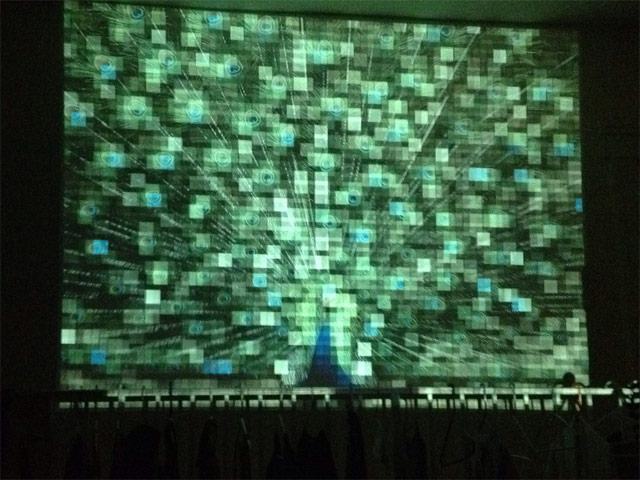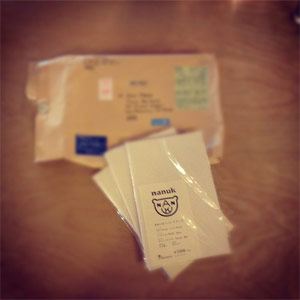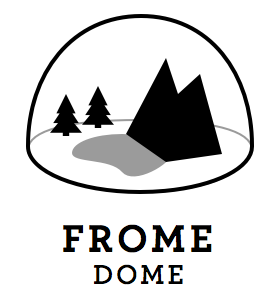Creators: Nina Mehta
 Nina Mehta is a designer at Twilio in San Francisco. (She was recommended for this series by Khoi Vinh.) Follow her on Twitter at @ninamehta.
Nina Mehta is a designer at Twilio in San Francisco. (She was recommended for this series by Khoi Vinh.) Follow her on Twitter at @ninamehta.
1) What have you been making lately?
Form has been a driving force for what I’ve been making.
Twilio makes an API, a string of letters and numbers. Without beautiful screen shots or a physical product to show off, a lot of what I do gives something invisible a form and voice. Work is focused on explaining who we are, what we do, how people can use us, and designing the API and the site such that we get out of the way and make everything as people-friendly and self-service as possible. I’ve been working with the mobile team to help launch our iOS SDK.
By the time I get home, I’m hungry to make things that take a physical or spatial form.
I just printed a book about Berlin and electronic music. It’s is designed like German techno is produced: mathematical, minimal and a little weird. The pages fit a 12×12 record sleeve and sit happily next to a set of turntables I’m babysitting for a few months.
I’ve also been learning how to do live music visuals with VJ software and projectors. It’s been really fun to relate this project to experience design philosophy and work in a physical space. I work as many of my own, photos, images and videos into my designs.
I used to work in journalism, so I stay pretty connected with the news design community. I have a few ideas brewing.

2) What’s your favorite and/or newest tool that you use for work?
F.lux is a remarkable app for early morning and late night work. My screen fades to an orangish tungsten color when the sun is down. Protecting my eyes from the sharp blue screen has made it notably easier to keep my mind calm. The ‘disable for an hour’ is perfect when I’m working specifically with color.
 I discovered nanuk sketchbooks in Tokyo. I love the paper weight, the color and the sheet size for concepts and flow sketches.
I discovered nanuk sketchbooks in Tokyo. I love the paper weight, the color and the sheet size for concepts and flow sketches.
3) What’s your favorite and/or newest tool that you use for fun?
I use Modul8 when I want to make visuals in an improvisational style and designs on the fly. I go to Resolume Avenue when I want to queue up designs in an organized pattern that I’ll be using later.
About a decade or so of my life was spent on classical music training. After studying experience design and HCI, I really wanted to find a way to merge the two, which is how I got into live music visuals. Once I moved to San Francisco, learning from pros became very easy. Working in real time also helps me practice detachment and explore the supposed four threads of experience design.
4) What’s something great you’ve read lately?
Okay, I hope it’s alright that I’m recommending something from 1991.
I recently reread Computing for the 21st Century, the piece Mark Weiser wrote about ubiquitous computing while he was at Xerox. He described a world where he expected computers to be completely immersed in our lives and environment.
“Hundreds of computers in a room could seem intimidating at first, just as hundreds of volts coursing through wires in the walls did at one time. But like the wires in the walls, these hundreds of computers will come to be invisible to common awareness. People will simply use them unconsciously to accomplish everyday tasks.”
Invisible technology is just beautiful. It’s remarkable to read something from nearly 20 years ago that practically calls out designs like the iPad and systems like Dropbox. Though calm computing has a long way to go, I truly believe APIs are an important part of the path to getting us there.
But, since I recommended something from the past, I’ll share something from the future. I just preordered Mark Deuze’s book Media Life – Digital Media and Society, which talks about how we immerse our lives in media and co-creation.
5) Who should I interview for this series?
Have a chat with Alexandre (Xande, pronounced Shawn-Gee) Macedo (@iamxande). We worked on the design team together at RockMelt before he joined Apple. He’s an incredible designer and has a thoughtful approach to designing details that call to our senses and emotion. He has a knockout shoe collection, too.
A few posts back, David Cole suggested Robin Sloan. I sincerely second that.
SplatF Creators highlights my favorite creative-types and the tools they use for work and fun. Previously: Nick Disabato, Chicago-based designer, publisher, and design publisher.

Check out my new site: The New Consumer, a publication about how and why people spend their time and money.

